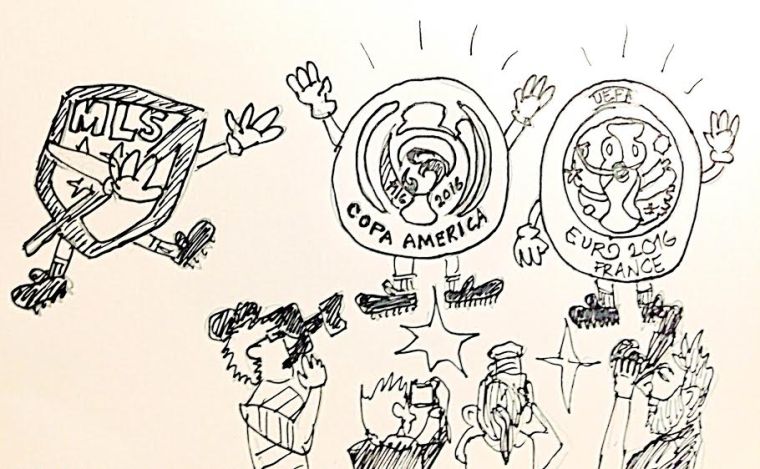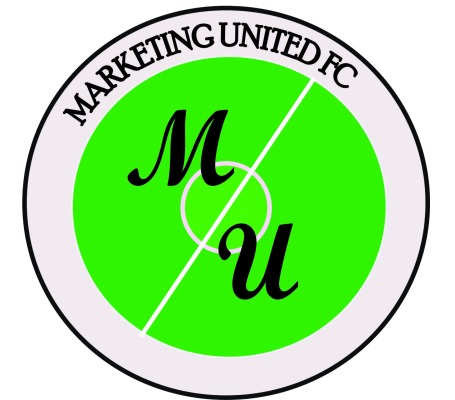 We are currently three months into the MLS’s 21st season, on the heels of a successfully hosted Copa America Centenario, and now seems like as good as time as any to have a status report on how things are going. After all, if MLS was a living, breathing human being, it’s finally old enough to buy a beer now. Could this be a sign of more lucrative beer sponsorships to come? And can MLS finally get over the heavily coveted TV ratings hump that has been dogging the league for years?
We are currently three months into the MLS’s 21st season, on the heels of a successfully hosted Copa America Centenario, and now seems like as good as time as any to have a status report on how things are going. After all, if MLS was a living, breathing human being, it’s finally old enough to buy a beer now. Could this be a sign of more lucrative beer sponsorships to come? And can MLS finally get over the heavily coveted TV ratings hump that has been dogging the league for years?
Back in March, this year’s MLS opener featuring defending champion Portland Timbers and defending runner-up Columbus Crew on ESPN averaged 362,000 viewers. The following nationally televised matchup between Seattle Sounders FC and Sporting KC on FS1 averaged 267,000 viewers. Since both ESPN and FOX Sports are continuing a Sunday afternoon/night doubleheader that was put in place last year, comparing viewers becomes much easier. Last year’s MLS opener featuring Orlando City and NYCFC averaged 539,000 viewers, 33% higher than 2016. But last year’s New York Red Bulls vs. Sporting KC matchup on FS1 drew virtually the same amount of viewers as 2016. At best, these figures suggest that MLS has found a small but steady niche audience.
The “newness” element of having two expansion teams playing in their first ever competitive match was clearly a contributing factor to the higher than normal average viewership for the opening match in 2015. But MLS cannot keep expanding so that wow factor will soon become unavailable. Other factors such as star power, team loyalty, and must-see TV will be more paramount as the league moves toward this next phase in its history.
Perhaps less surprisingly, viewership for the plethora of international soccer that has been on TV this summer is significantly higher. ESPN has reported an average of 815,000 viewers per game as of the end of June for Euro 2016 in France. The Saturday quarterfinal match-up between Germany and Italy, two contingents with heavy fan bases in the U.S. drew over two million viewers and a 0.8 rating among the 18-49 demographic on ESPN. The Copa America broke TV records across the board in the tournament’s history. MLS was even able to capitalize on the Copa, albeit for one game by featuring a doubleheader on Univision after the third place match between the U.S. and Colombia. The following game between the San Jose Earthquakes and Los Angeles Galaxy was the largest TV audience for an MLS game since 2008, drawing an average of one million viewers. While piggybacking off the coattails of games that are popular to mainstream audiences is a brilliant way of exposing MLS to the masses, making sure the product on the field is exciting to watch is the best way of retaining higher percentages of those audiences for future games.
One source of inspiration for MLS could be the Icelandic national soccer team. It’s thrilling Cinderella performance in Euro 2016 captured the small nation by storm and an incredible 99.8% of Iceland’s TV viewers at the time witnessed the team’s final game in the quarterfinals against host nation France. The NFL by comparison drew around 70% of TV viewers in the 18-49 demographic for Super Bowl 50. Is there reason to believe an MLS game can draw the interest of 99.8% of American TV viewers? Absolutely not. But it proves once again just how important it is to have an exciting game to watch on the field.
On July 17, MLS will hope that its nationally televised Cascadia rivalry match-up between Seattle Sounders and Portland Timbers on FOX can pass the test to prove MLS Soccer deserves a steady position on broadcast TV, and not just cable. Based on the league’s current ratings performance that probably won’t happen. But one can dream, and the dream of MLS becoming a ratings monster lives on until it becomes a reality.
REFERENCES
http://thebiglead.com/2016/03/09/mls-opener-viewership-down-33-percent-on-espn/
http://www.hollywoodreporter.com/live-feed/uefa-euro-2016-staggering-998-908124

 Last night the Copa America Centenario came to a close with Chile defeating Argentina in a penalty shootout after a 0-0 draw. This was almost an exact replica of Copa America 2015 when Chile defeated Argentina in a penalty shootout after a 0-0 draw. The difference? The United States does it bigger, and does it better.
Last night the Copa America Centenario came to a close with Chile defeating Argentina in a penalty shootout after a 0-0 draw. This was almost an exact replica of Copa America 2015 when Chile defeated Argentina in a penalty shootout after a 0-0 draw. The difference? The United States does it bigger, and does it better. The new season is already underway, and with it comes a lot of uncertainty. Which team will surprise us the most? Can the Portland Timbers repeat their performance in 2015? Will the LA Galaxy continue their dominance over the league? Will the Seattle Sounders finally win a well deserved title for their passionate fans? But most importantly, will the attendance and TV viewership continue to grow?
The new season is already underway, and with it comes a lot of uncertainty. Which team will surprise us the most? Can the Portland Timbers repeat their performance in 2015? Will the LA Galaxy continue their dominance over the league? Will the Seattle Sounders finally win a well deserved title for their passionate fans? But most importantly, will the attendance and TV viewership continue to grow?


 A recent interview with Amy Rosenfeld of ESPN by reporters from Philly.com highlighted some key updates to the status of Major League Soccer’s TV ratings in 2015. One of the most striking statistics was the average of 283,000 viewers per game. This is an increase of 18% from the 2014 season that amassed 240,000 viewers across all ESPN networks. While its figures were skewed by outliers such as the NYCFC vs. Orlando City inaugural match that drew 539,000 viewers, there are match-ups on the other end of the spectrum as well like the March 29th game between the Philadelphia Union and Chicago Fire (two teams arguably without any tremendous star power and limited marketability at the moment) drawing just 152,000 viewers on national TV.
A recent interview with Amy Rosenfeld of ESPN by reporters from Philly.com highlighted some key updates to the status of Major League Soccer’s TV ratings in 2015. One of the most striking statistics was the average of 283,000 viewers per game. This is an increase of 18% from the 2014 season that amassed 240,000 viewers across all ESPN networks. While its figures were skewed by outliers such as the NYCFC vs. Orlando City inaugural match that drew 539,000 viewers, there are match-ups on the other end of the spectrum as well like the March 29th game between the Philadelphia Union and Chicago Fire (two teams arguably without any tremendous star power and limited marketability at the moment) drawing just 152,000 viewers on national TV. In sports, exposure for a franchise at its most basic level is achieved through advertising and television. A recent article by the Sports Business Journal reported that many Major League Soccer teams are operating under new local television deals to broadcast their games. Of the 20 teams in the league, 8 of them established new local agreements in accordance with the new national TV rights deal with ESPN, Fox Sports 1 and UniMas that all began this season. While the financial details weren’t disclosed, these new deals show a trend of increased production value of the broadcast and increased exposure of the teams in their surrounding regions.
In sports, exposure for a franchise at its most basic level is achieved through advertising and television. A recent article by the Sports Business Journal reported that many Major League Soccer teams are operating under new local television deals to broadcast their games. Of the 20 teams in the league, 8 of them established new local agreements in accordance with the new national TV rights deal with ESPN, Fox Sports 1 and UniMas that all began this season. While the financial details weren’t disclosed, these new deals show a trend of increased production value of the broadcast and increased exposure of the teams in their surrounding regions.